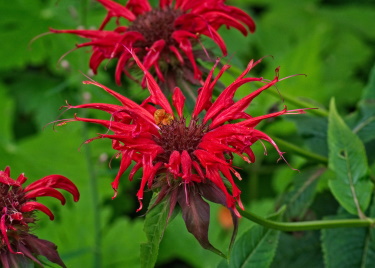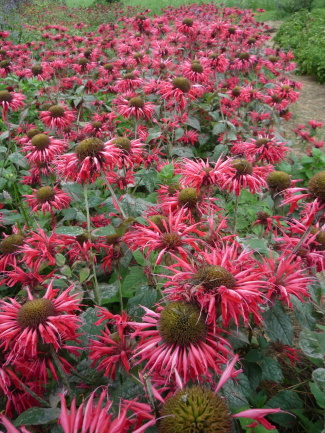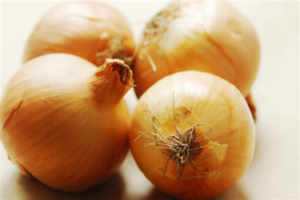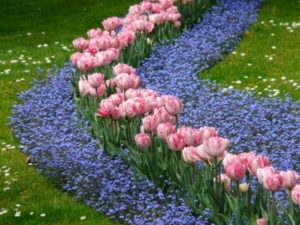
Bee balm can be counted as one of nature’s finest gifts to all the garden lovers and florists. Its tangy scent, nutritive profile, and medicinal characters make it grow-worthy and most adored among gardeners.
The plant is a classic example of beauty and charm with it’s flamboyant, two-lipped blossoms that bloom in uncountable shades of pink. However, many varieties have blooms that range in color from red to bluish lilac too.
This North American dweller is a perennial herb that grows to a maximum height of 90 cm. The bee balm leaves are uniquely assembled on the shoot with a slender and serrated shape. The leaves of bee balm produce an unusual scent that is similar to bergamot orange, which justifies the common name “bergamot.” Other common names of bee balm are horsemint and Oswego tea.

A Quick Synopsis Of The Bee Balm Plant:
Genus: Monarda spp.
Family: Lamiaceae (mint family)
Homeland: North America
Named after: Nicholás Monardes
Plant type: Annual and perennial
Most common species: M. Didyma, M. Fistulosa, M. Pringle
Table of Contents
How and When to plant bee balm?
Beebalm is a perennial, herbaceous, rhizomatous plant that grows best in the US hardiness zones 3 to 9. The best thing about planting and growing bee balm is that it is not very high maintenance. Just a little bit of effort will make your bee balm sprouting, like a red carpet of pinnacles blooming in full swing.
The nicest time to plant your bee balm is spring. However, It can also be sowed in the fall. Both seasons are ideal for planting bee balm.
Plant your bee balm after the winter season, when the soil is somewhere between frosting and drying conditions.
Enrich your soil by adding mulch or compost after planting.
Prune dead leaves and flowers from time to time to promote new growth.
Divide the roots after every 2 or 3 years to avoid excessive overlapping of the plants.
Cut the tip bearing flowers before the spring season, this will encourage budding, and new flowers will grow rapidly.
Stock up some of the seeds for next season, by collecting brown seeds from the flowers. Store the seeds in a plastic bag with sand in a refrigerator
An insider tip: Grow your bee balm in a place with good air circulation to avoid pest and fungal manifestation.
Bee Balm planting Conditions:
Bee balm is a very low-upkeep plant and requires a little effort to thrive. Just take care of the planting conditions, and your garden will be full of these citrusy smelling plants. The planting conditions for bee balm plants are as follows.

SUNLIGHT: Bee balm should be planted in a space where it gets full sun exposure. It will do good in partial shade too, but the more sunlight it gets, the more vibrant it turns out to be.
SOIL: The soil should be well-draining and moist enough. Bee balm tends to produce better plants when the soil is moist and rich in organic matter. The soil should be in a slightly acidic to a neutral zone i.e., 6-7 PH is preferable.
WATER: Bee balm is not an excessive drinker, but that doesn’t imply that it can be left unwatered for long periods of time. The soil should be moist, especially at the time of planting.
DISTANCING: The bee balm rhizomes grow horizontally over a large surface area. So, it is recommended that you plant your bee balm at a distance of about 18 to 24 cms or 7 to 9 inches.
How to grow bee balm?
Once you have taken care of all the planting conditions and your garden, lawn, or yard is all set to cultivate your bee balm plants, it’s time to step up and start the cultivation process.
Choose your preferred method of growing the plant; you can use the seeds, stem cuttings, or divisions to grow your bee balm.
Growing bee balm from divisions:
The easiest method of propagation is, for sure, using the plant divisions. Divisions are basically a section of enough roots with a thin part of the stem attached to it.
To get a division, jab the soil and dig out a rhizome, or you can simply pull the stem from the ground along with a bunch of roots. Now wash the soil off and chop the roots a bit. Divide the root into sections if you find it too big. Now plant the divided sections at a new spot and water regularly.
Growing bee balm from stem cuttings:
The stem cutting method is a little puzzling but still successful.
Cut a 6 to 10-inch piece of stem and plant this cutting in a pot first to initiate rooting. Once the roots start to grow, you can transfer into the ground for further development.
Make sure to provide moisture, rooting hormone, and organic-rich soil to the cutting to help it thrive.
Growing bee balm from seeds:
The toughest and most prolonged method is propagating bee balm from seeds. Seed cultivation needs almost two months, along with preparation (1 month) and germination (10 to 40 days).
Prepare the seeds by refrigerating them in a plastic bag along with moist sand. Now, after one month, take the seeds out and plant them in rich soil and leave to germinate.
When does bee balm bloom?
The flowering season for bee balm is largely dependent on your area and region, but it is nowhere outside of the summers. You can find your bee balm plant blooming in full swing from early to late summers.
This is the high time to harvest your exotic and stunning flowers, as they are at their fullest in this season. Cut the whole stem or trim out individual flowers to decorate them in your vase/bouquets.
How to care for your bee balm?
Though the plant is really easy going and non troublesome, it requires slight care to stay disease and pest-free.
Following pests and diseases are likely to feast upon your bee balm plant.
Spider Mites: Spider mites usually dwell on the leaves and flowers and feed upon the nectar of the petals. This causes discoloration and hypopigmentation on leaves and petals, and ultimately the leaves fall off.
Control: Spraying with insecticidal soap or neem oil.
Aphids: Aphids are parasites that deteriorate the leaves and promote fungus and mold growth on the leaves.
Control: Spraying a mixture of water and soap on leaves, growing plants that promote beneficial predators to come, and eradicate aphids.
Stalk borers: Stalk borers is a moth, whose larvae feed upon the stem of bee balm and many other plants. They leave holes and cavities in the stem and produce yellowish debris on the stem.
Control:Cut off the affected stem or whole plant, if needed.
Powdery mildew: Bee balm is very prone to get powdery mildew- a fungal disease that causes wilting, wrinkling, and Browning of the leaves. It produces a grey colored powder on the leaves that bears spores, which are very easily spread by the wild to the neighboring plants.
Control: Reducing humidity, increasing air current, and spraying a suitable fungicide spray will help in eliminating the disease. Another remedy is, spraying a mixture of water, baking soda, and an insecticidal soap on the affects plants.
Bee Balm Medicinal properties and Miscellaneous Uses:
All species of bee balm plants are rich in many important chemicals, which makes it very likely to be used for medicinal purposes. The essential oils extracted from bee balm are extensively used in many antimicrobial, antibacterial, and antispasmodic products. Some of bee balm’s medicinal properties and uses are referred below:
Used as a Decongestant:
Bee balm is rich in soothing and calming agents that relieve cold, cough, and flu. Various herbal medicines make use of bee balm to treat sore throats, nasal congestion, and fever.
Aids in digestion:
Many varieties of bee balm are used as an agent to reduce indigestion, bloating, and bowel disorders. Besides digestion, bee balm works wonder in reducing menstrual cramps and muscle spasm related to digestive disorders.
Reduces allergies:
One of its common names, i.e., “Bee balm,” accounts for its property to treat bee stings and other rashes. Bee balm can be applied as tinctures to reduce allergies, scrapes, and other inflammations.
Employed as a brain stimulant:
It has a soothing and calming effect on the nerves, hence, used as a brain stimulant to relax the nervous system. It relieves tension and anxiety and leaves the patient calm.
Utilized in mouthwashes:
Thymol, a major chemical of bee balm plants, is a constituent of many types of mouthwashes. Bee balm mouthwash treats mouth ulcers, mouth sores, and gum diseases.
Other uses:
The uses are not confined to medicine only. Bee balm edible species are also used in obtaining essential oils, making different kinds of teas, making salves, garnishing salads, producing vinegar, and whatnot.
Bee Balm plant- Some interesting facts that would amaze you:
★Bee balm plant is not only loved by gardeners and florists, but it’s likewise adored by wild creatures, including birds, bees, and insects. Downpour your garden, lawn, or terrace with bee balm and wait to get a lot of attention from fluttering hummingbirds, bees, and vividly colored finches.
★Some species of bee balm are exceptionally vibrant and glamorous that they have earned the Garden Merit Award from Royal Horticultural Society. The awarded cultivars include Beauty of Cobham, Gardenview Scarlet, Marshall’s Delight, Squaw, and Violet Queen.
[embedded content]



